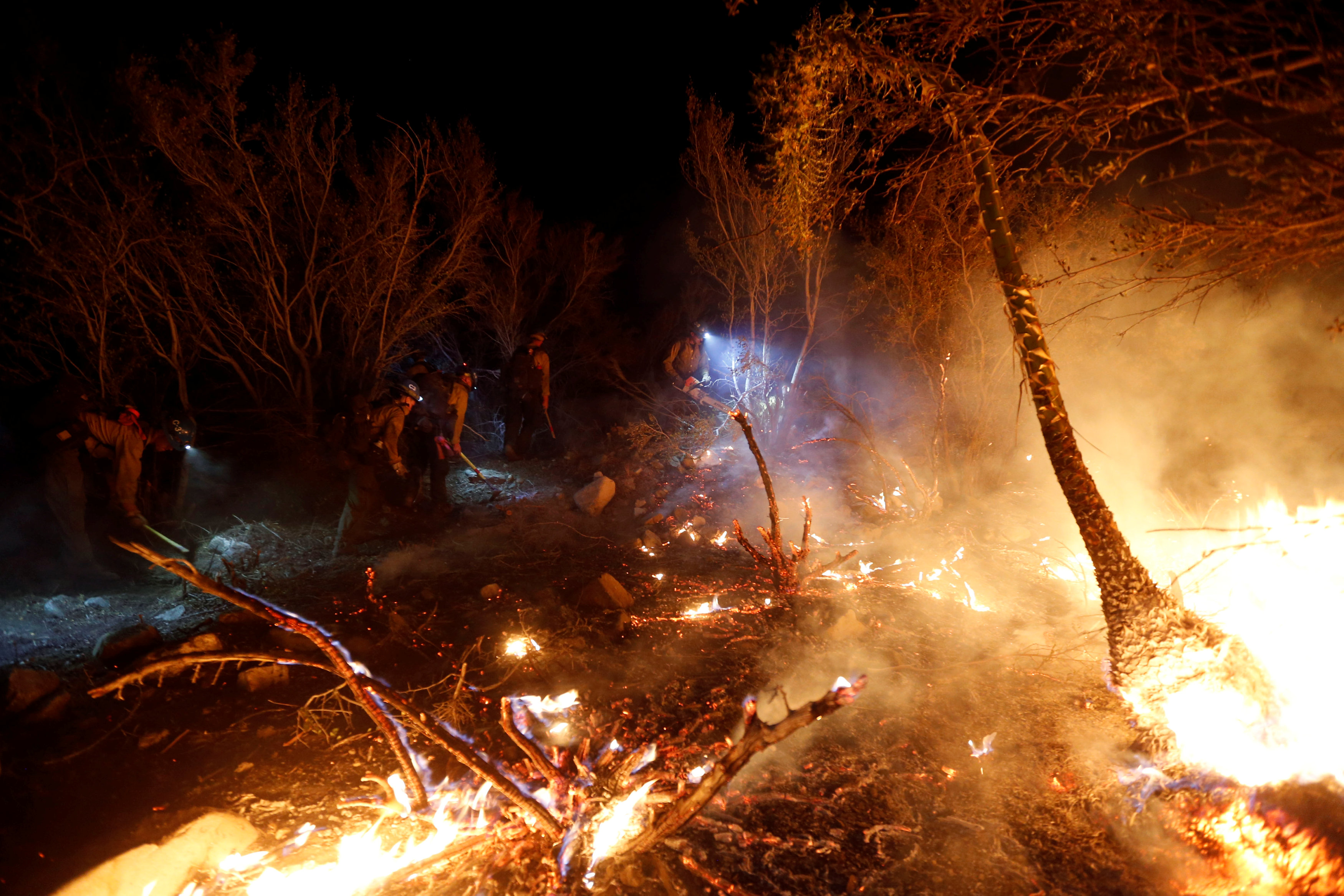
SAN FRANCISCO (Reuters) – Dozens of wildfires raged in the arid U.S. West on Tuesday, blackening hundreds of square miles of land and forcing residents from homes in California and Washington state.
At least six people have died in Western wildfires this summer.
Seven new large fires have flared up since Monday, bringing the total number of blazes burning in the region to 32, according to the National Interagency Fire Center. Combined, the wildfires have charred more than 500,000 acres (200,000 hectares), the agency said.
In California’s San Luis Obispo County, firefighters have been able to carve containment lines around about a third of the 37,100-acre (15,000-hectare) Chimney Fire by Tuesday morning.
That blaze, which started in the county’s rugged coastal hills on Aug. 13, has destroyed 36 homes and continued to threaten nearly 1,900 more, according to the California Department of Forestry and Fire Protection (Cal Fire).
Evacuation orders were in effect for about 6,000 residents on Tuesday, according to Cal Fire spokesman Aladdin Morgan, up from just 2,500 on Monday.
The historic Hearst Castle, a major tourist attraction on California’s central coast, will be closed to the public through the week as a safety precaution due to the blaze.
The monumental estate, built in the early 20th century for publishing tycoon William Randolph Hearst, was no longer in immediate danger, but the Chimney Fire had crept within three miles (5 km) of the castle over the weekend before shifting direction, authorities said.
To the north, firefighters were battling a cluster of blazes that have blackened about 8,000 acres of dry brush, grass and timber in the Spokane, Washington, area.
Washington state Governor Jay Inslee declared a state of emergency for 20 Washington state counties on Tuesday as he toured the Spokane area, his office said.
Authorities said on Monday that, due to limited resources, they had to enlist the help of local farmers to help battle flames that had destroyed more than a dozen buildings in the area.
Those blazes all erupted on Sunday, stoked by extremely hot, dry weather and gusty winds. Lower temperatures, rising humidity and diminished winds were expected to help crews gain some ground on Monday, as firefighting reinforcements arrived.
As of Tuesday, the so-called Hart Fire had been 10 percent contained while officials were hopeful that a pair of fires, dubbed the Spokane Complex, could be contained within their existing footprints.
(Reporting by Curtis Skinner in San Francisco; Brendan O’Brien in Milwaukee; Editing by Jonathan Oatis and Christian Schmollinger)











